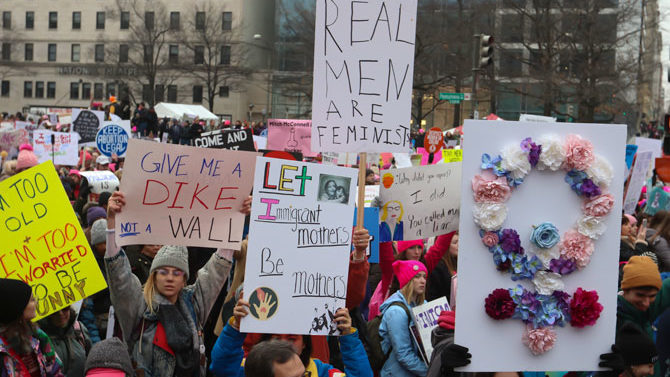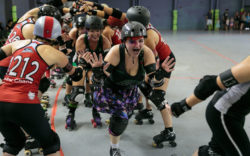Two years ago, on the day after President Trump’s inauguration, the largest single-day protest in history happened: the Women’s March. In Washington D.C. and other cities, millions of women gathered to protest sexist statements made by Trump during his campaign. This year’s march, instead of being filled with anger and mourning, took on a more triumphant tone.
It served as a celebration of women in power: A record 131 women are currently serving in Congress, over 100 of whom were elected a few months ago in the midterm elections.
Marchers believed they played a large role in the sense of urgency around women’s rights. According to the official Women’s March website, the 2017 Women’s March inspired hundreds of women to run, millions more to vote and dozens to win elected office.
Whether or not the march is what sparked the change, there is no denying that the representation in America’s national government looks drastically different than it did in 2016. The most recent election brought in the first Native American woman (Deb Haaland of New Mexico) and the first Muslim women (Rashida Tlaib of Michigan and Ilhan Omar of Minnesota) to the House of Representatives, and the first openly bisexual senator (Kyrsten Sinema of Arizona), as well as re-installing Nancy Pelosi, the first female speaker of the House.
This year, as well as in the two years since it has begun, the march included a number of Athens residents, including Habitat for Humanity Outreach Coordinator Bridget Sivewright and UGA student Claire Cornell. The pair had been looking forward to the march for the past two years, and felt that with the election of so many women, there was no better time to stand up for their rights and celebrate the progress that has been sparked.
Cornell said she wants to be able to look back on her life and know she did her part to spark change. Though she has been to other protests in Athens, including one raising awareness for sexual assault before the 2016 presidential election, this was her first time traveling to take part in a march.
“I think there’s something powerful about that many people coming together to reclaim their humanity and stand up against injustice,” Cornell said. “I want to be on the right side of history.”
Sivewright agreed. Though she works with sexual assault prevention centers such as Project Safe and is involved with Athens for Everyone, she wanted to take her activism further. She said she wanted to advocate specifically for domestic violence. To her, the march was less about creating direct change and more about sparking a dialogue.
“Even if it’s controversial, a march is supposed to start a conversation,” Sivewright said. “I would like for people who are not educated on women’s issues to take time to learn, I and then ideally what would happen is that our political leaders would respond and support legislation that supports women.”
This change is more likely now than ever, given the amount of women in office after the midterm elections. Sivewright said this was what inspired her to attend the march this year—she felt empowered by the results of the midterms and wanted to be part of something celebratory.
“With so many women in office, people really take that as a victory,” Sivewright said. “At least for me, I was shocked, but in the best way possible.”
At 9 a.m. Saturday, Jan. 19, a few hundred people were gathered in the streets around Freedom Plaza, waiting for the march to begin. Over the next two hours, they were joined by thousands more, holding signs, chanting, singing and shouting. At 40 degrees, the weather was not as harsh as expected—those checking the forecast a few days before would have seen temperatures as low as 10 degrees and a chance of snow.
As expected, many were sporting pink “pussy” hats, as wells as buttons, T-shirts and more, mostly homemade. About half the signs featured Donald Trump, whether they contained his name, a hand-drawn meme or an unflattering, often-photoshopped picture. The most popular chants included “This is what feminism looks like,” and “Fuck Donald Trump.”
Though it was cold, Cornell said she was pleasantly surprised by the turnout and the vibe of the march. “I didn’t really know what to expect, but I was moved by the experience and happy to see a big representation of minority groups,” she said. “I saw every type of woman there and more.”
The types of women and groups represented were incredibly diverse. Though there were not many protestors of the march, most every women’s right group was represented, including pro-life and Christian groups.
“I was so happy to see everyone represented, and I was impressed with the civility and nonviolence there.” Cornell said. “ Everyone was able to have their say.”
And so was the theme. The Women’s March, according to its website, preaches inclusivity and acceptance of all. According to the signs, this inclusivity stops at Donald Trump, as he seems to have been the the inspiration for the first march, as well as the fuel to the fire that has kept women marching. After the celebration of two years since the first march, it doesn’t seem to be going out anytime soon.
Like what you just read? Support Flagpole by making a donation today. Every dollar you give helps fund our ongoing mission to provide Athens with quality, independent journalism.









